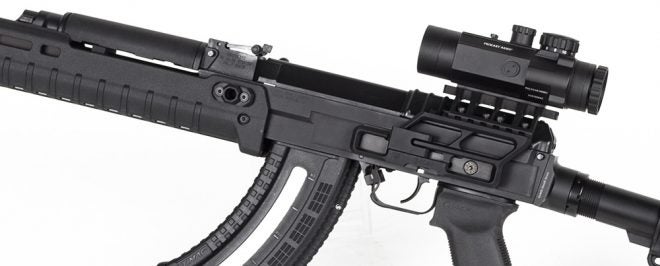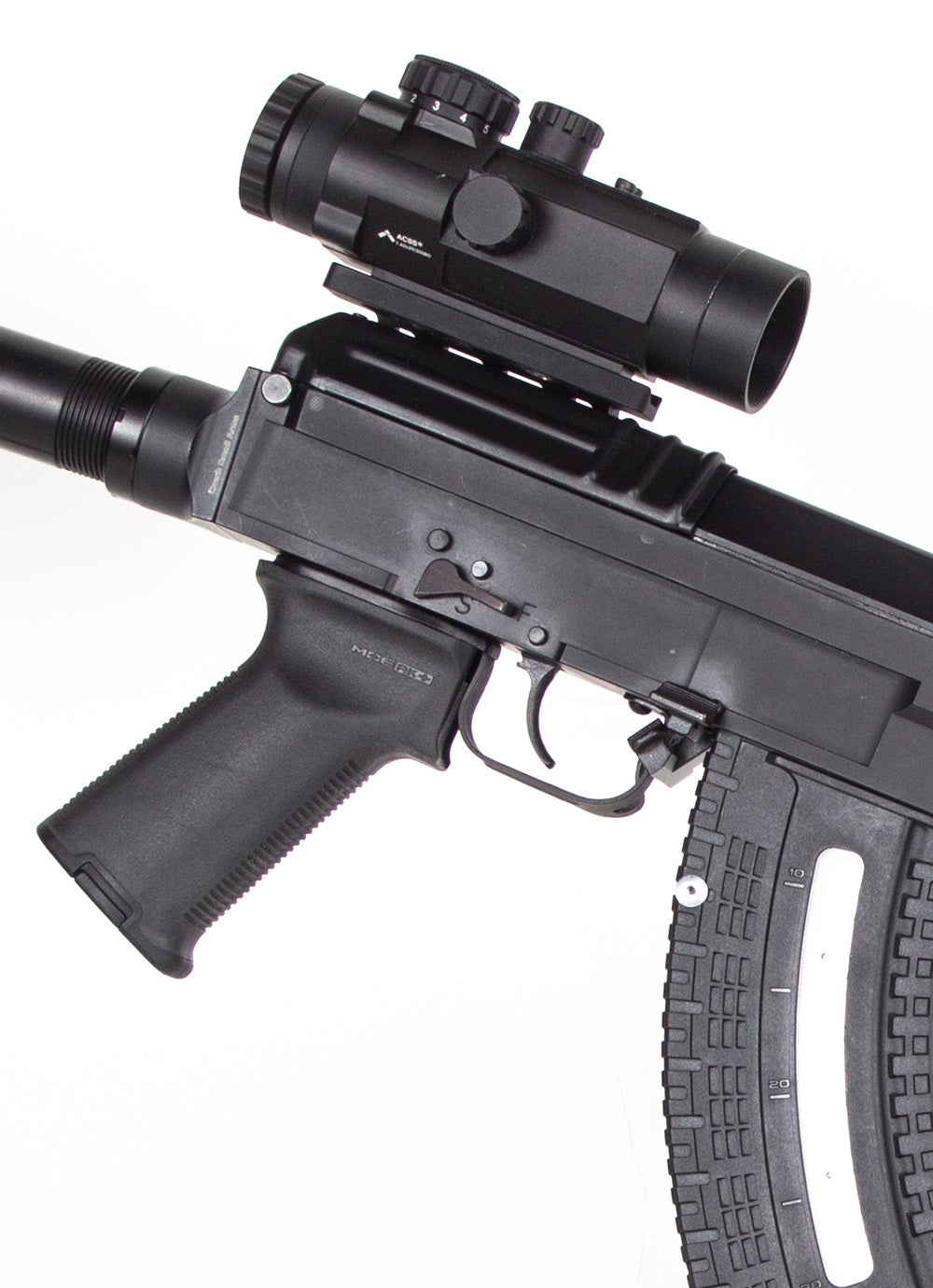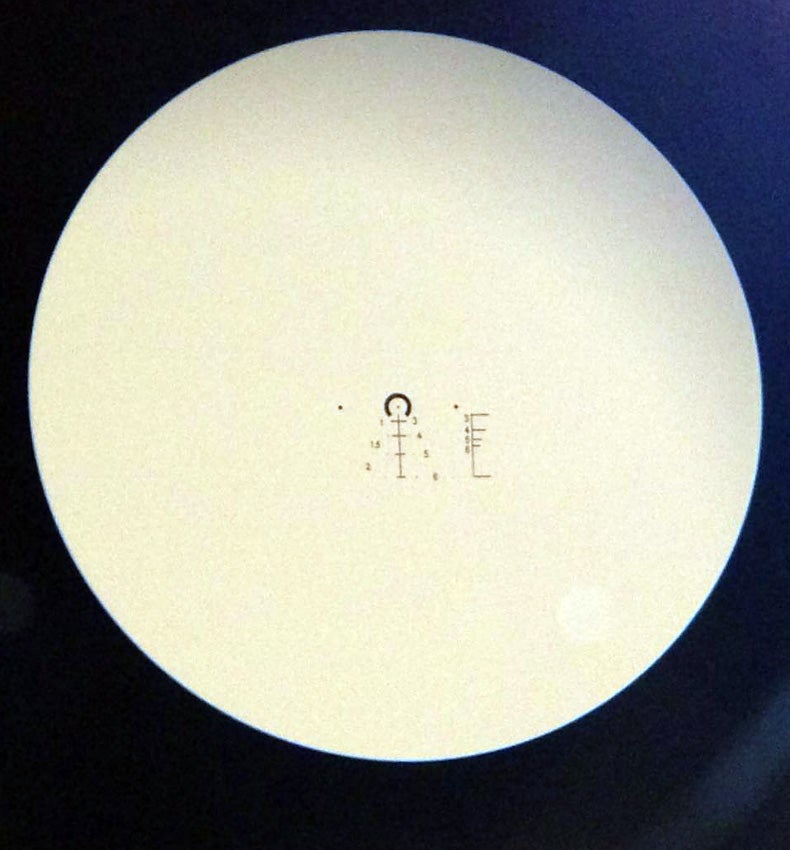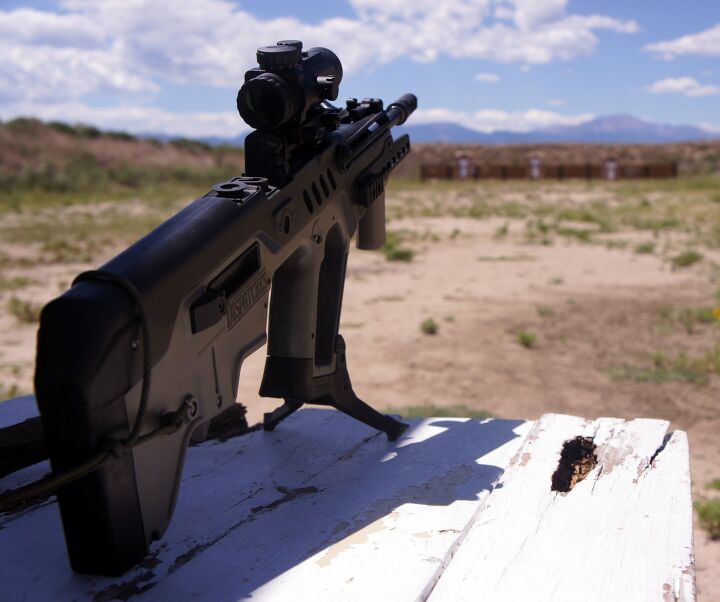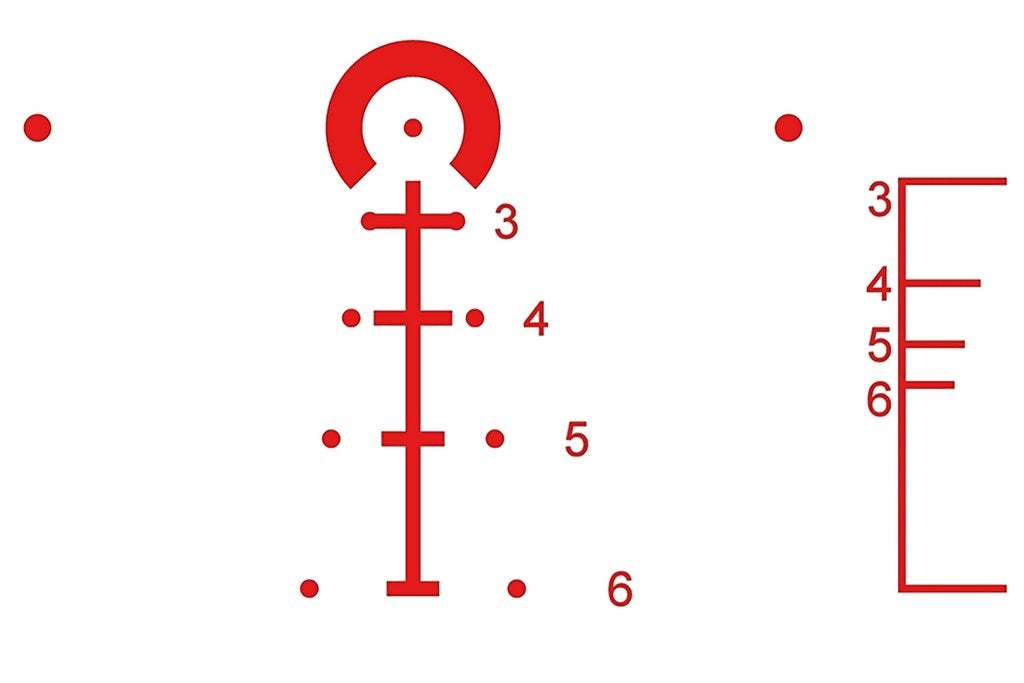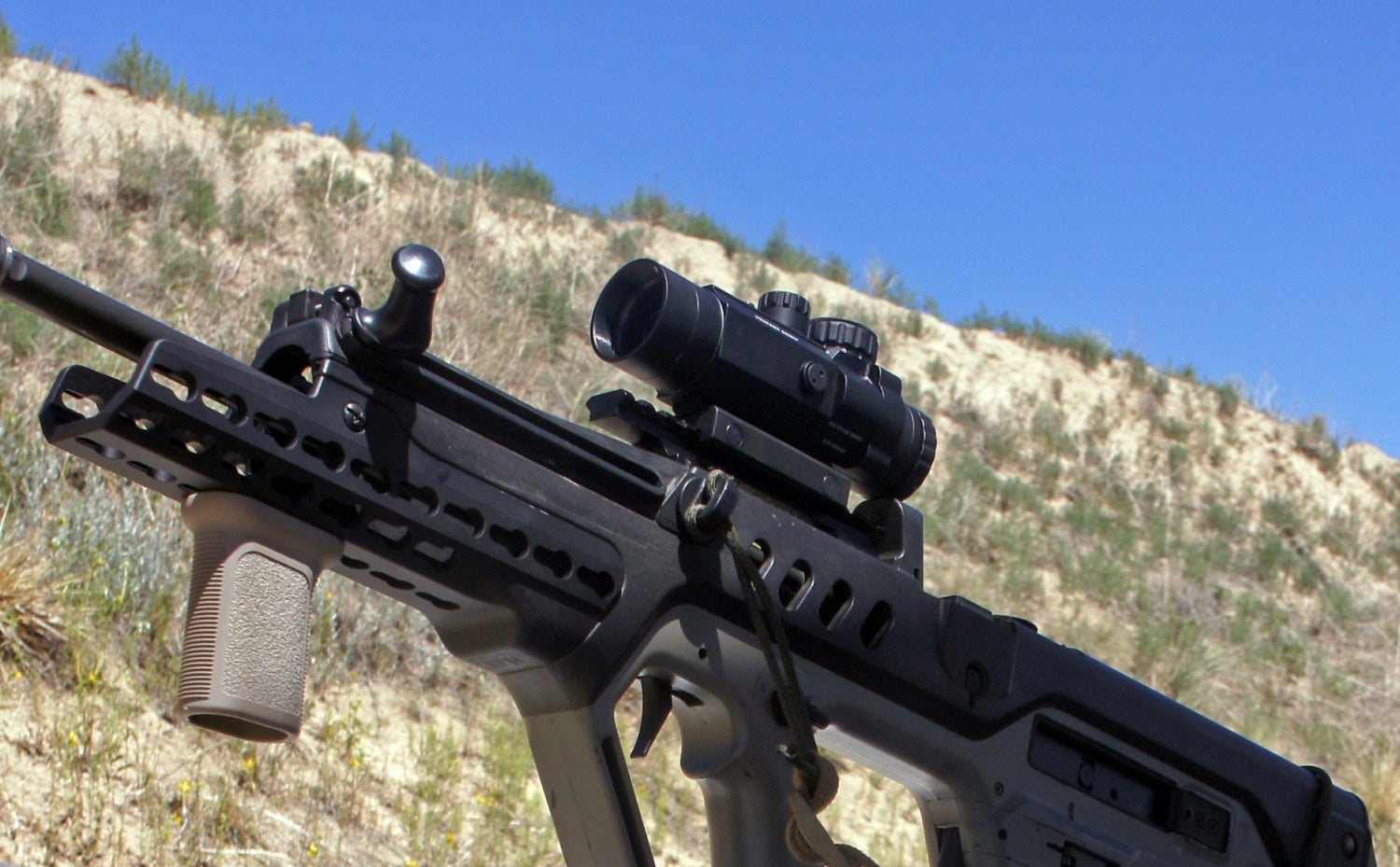As part of the ongoing Vz58 obsession I’ve suffered from for the last few years, I’ve been hunting for the right kind of optic for these rifles. That led me onto the Primary Arms 4x Prismatic. Primary Arms is a budget manufacturer producing a number of red dots, magnified scopes, and prismatic sights. While the optics are made in China, their design team seems to consistently put together good ideas. I’m talking about things like “lets give the 4-16 optic a dedicated .308 reticle” or “lets make sure the 1x on the variable optics is a true zero magnification.”
When the opportunity came up to try out one of their 4x Prismatics with a dedicated 7.62X39/300BO ACSS reticle, I knew I’d found my Vz58 optic.
This is a fixed 4 power optic, with a 2 and a half inch eye relief, and an illuminated reticle. They generally cost $399 CAD ($299 USD) and a 3x option is also available. The turrets are capped, adjustable in half MOA clicks, require a screwdriver to adjust (or a dime if you’re a heathen) and produce a solid click sound, but are not as tactile as some turrets I’ve used. I would not wear gloves and hearing protection while counting your adjustments.
I’ve been burned by Chinese optics before, but the thing that really won me over on the Primary Arms was the level of standardization and adjust-ability. So if you look at the mounting base, that’s a standard Trijicon dimension.
That means you can buy yourself a fancy Larue mount if you so choose and use it with the Primary Arms. Or abandon the picatinny system all together and jump to a side mount RS Regulate system. Which makes a lot of sense if you’re shooting AK or Vz58 variants where receiver side-rails are a common feature.
The adjust-ability part comes from what Primary Arms puts in the box. If you look at the marketing images of this scope, Primary Arms ships it with a picatinny rail on top, so that you can mount a piggy-backed red dot. I hate piggy-backed red dots. I can’t stand the massive height over bore, floating chin weld, and “peek-a-boo” transition to get your face behind them. I understand why some people choose that system, and why in a standardized big-army world they could be settled on as an appropriate solution, but personally I’ll always choose offset over piggy-back.

I love that Primary Arms makes it very easy to remove that top pic-rail if I choose. The screws are obvious, and there’s an appropriately sized allen key in the box. It’s worth noting that there is a recoil lug on that pic-rail, so if you are mounting your RMR/Deltapoint/Shield/Razor/etc up there it should be retaining zero.
Also, there’s a second set of screws in the box. Because this isn’t necessarily a standard AR-15 optic, you might find yourself looking to mount the optic a little lower than the standard AR-15 height. The spacer comes right out, and the right length screws are there and available if you want to bring it down.
That might not sound like a big deal. But I was frustrated to no end when my Aimpoint Pro only came with long screws, and attempts to source short screws from several local Aimpoint dealers went no-where. It’s not a hard concept that if you’ve got a spacer in play, you should include the hardware to work without it, but it’s not something everyone does, and something I appreciated in the Primary Arms.
I’m afraid I do not own a .300BLK rifle to test that side of things. Being almost exclusively an AR cartridge, it has limited popularity in a country where ARs are relegated to the range only. But, I did mount the Prismatic on my 5.56 AR-15 and my Tavor, mostly to confirm that the eye relief still functions on those rifles without cheek risers and in the case of the Tavor, without LOP adjustment.
Lets come back to the reticle for a minute. Primary Arms clearly takes great pride in their reticle design, opting for fast shooting solutions based on yards rather than Mils or MOA subs-tensions.
The 7.62×39/300BO ACSS system is designed to work with either caliber, features elevation hash marks for out to 600 yards with 7.62×39 and 200 yards with 300BLK. The reticle illuminates using a CR2032 battery and has 11 levels of illumination plus an “off.” I found the lower settings were good and visible in low light on dark targets, while the brightest settings still put a distinct red tint into the reticle even in the extremely sunny visit to Colorado Springs.
The optic comes with a reasonably plain written manual that will hold your hand through the zeroing process and use of a reticle. No formal ballistics theory is required. They recommmend a 50 yard zero with a 16″ barrel, or a 100 yard zero for a 20″ barrel. I have an 18.5″ barrel (Canada eh) and opted for the 100 yard zero.
I was able to make hits out to 400 yards using the reticle hashmarks, but found with the 500 yard gong my 7.62×39 surplus just wasn’t up to the task. Hit high, hit low, hit left. The 500 and 600 yard targets were outside that particular rifle-cartridge-shooter combination’s capability. Which doesn’t necessarily surprise me. I thought a 600 yard hashmark was quite ambitious for the 7.62×39 round, but if you look around the youtube world there are evidently a few AK shooters who can pull it off.
You’ve also got lead dots on the left and right side of the main crosshair, which Primary Arms says are spaced for “average target speed spring and holding a weapon 8.6mph.” I was not able to test the effectiveness of these lead dots.
And finally on the right side of the reticle you’ve got a set of quick ranging hashmarks, where measuring an average 5’10” shape will identify your ballpark range from 300-600 yards. I generally prefer ranging reticles in optics 8x or higher, but its an interesting feature that definitely fits the concept of a do-it-all & do-it-easy kind of optic.
Easily my biggest criticism of the 7.62×39/300BO ACSS system is that there’s no published MOA values to the hash marks available. Maybe it doesn’t need to be in the manual (KISS) but I think anyone putting this kind of time into designing a reticle aiming system should make the hard numbers behind it visible. That sort of additional ballistic support would mean that those shooting handloads or unconventional barrel lengths could take the ACSS reticle and really tune it for their rifle.
Overall though, the 4x Prismatic is a rarity. I’ve never seen another dedicated 7.62×39 optic in Canada, and certainly not one that can be so flexible in it’s firearm compatibility.
 Your Privacy Choices
Your Privacy Choices
